📞+86 153 7530 2641 📧 hongjing.Wang@feichuncables.com

Heavy Duty Rubber Reeling Cable (N)SHTOEU-J for Stackers, Reclaimers, and Container Handling in Ports
Explore the features and benefits of the (N)SHTOEU-J heavy-duty rubber reeling cable, designed for high mechanical stress in port machinery like stackers, reclaimers, and container handling equipment. Ideal for motor-driven reels and harsh outdoor environments.
hongjing.Wang@Feichun
8/4/20258 min read

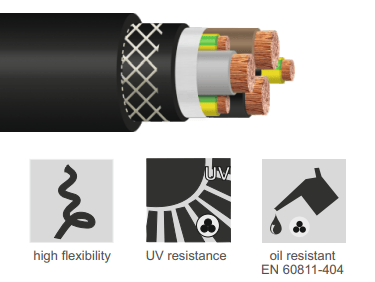
Introduction
In the demanding world of port operations, where massive machinery operates around the clock in harsh environments, reliable power transmission is not just important—it's critical. Reeling cables serve as the lifeline for mobile equipment, providing continuous electrical power to machinery that must move, rotate, and operate under extreme mechanical stress. These specialised cables differ from standard power cables in their ability to wind and unwind repeatedly whilst maintaining electrical integrity and mechanical durability.
Port environments present unique challenges that standard cables simply cannot handle. Container handling equipment, stackers, and reclaimers operate in conditions where cables experience constant motion, exposure to saltwater spray, UV radiation, extreme temperatures, and significant mechanical stress from both tensile and torsional forces. The failure of a power cable in such critical applications can result in costly downtime, safety hazards, and operational disruptions that ripple through entire supply chains.
The (N)SHTOEU-J heavy-duty rubber reeling cable represents a pinnacle of engineering specifically designed to meet these extraordinary demands. Manufactured according to DIN VDE 0250-814 standards, this cable combines advanced materials, robust construction, and proven performance to deliver reliable power transmission in the most challenging port and industrial environments.
Key Features of the (N)SHTOEU-J Rubber Reeling Cable
The (N)SHTOEU-J cable has been engineered from the ground up to withstand the punishing conditions encountered in port operations. Its design philosophy centres on providing exceptional resistance to high tensile and torsional stress, making it the ideal choice for applications where cables must endure constant winding and unwinding cycles whilst maintaining electrical performance.
One of the standout features of this cable is its compatibility with various reel systems. Whether your operation utilises motor-driven mono spiral reels, cylindrical reels, or spring-operated systems, the (N)SHTOEU-J adapts seamlessly to provide consistent performance. This versatility makes it particularly valuable for port operators who manage diverse equipment fleets with different reel configurations.
The cable excels in applications involving stackers and reclaimers, those towering machines that move mountains of bulk materials in ports and stockyards. These machines require cables that can handle not just the electrical demands of powerful motors and control systems, but also the mechanical stresses of constant movement across vast operational areas. Similarly, container handling cranes benefit from the cable's ability to maintain performance whilst supporting the precise movements required for efficient cargo operations.
Environmental resistance stands as another cornerstone of the (N)SHTOEU-J's design. Port environments are notoriously harsh, with equipment exposed to salt spray, intense UV radiation from reflected sunlight off water and containers, and moisture that can penetrate inferior cable designs. This cable's comprehensive weather resistance includes protection against UV degradation, ozone attack, and moisture ingress, ensuring reliable operation whether installed indoors or in fully exposed outdoor environments.
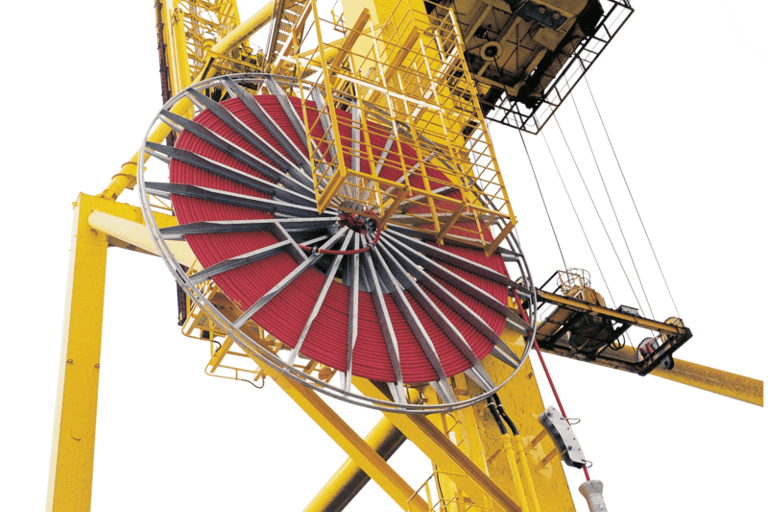

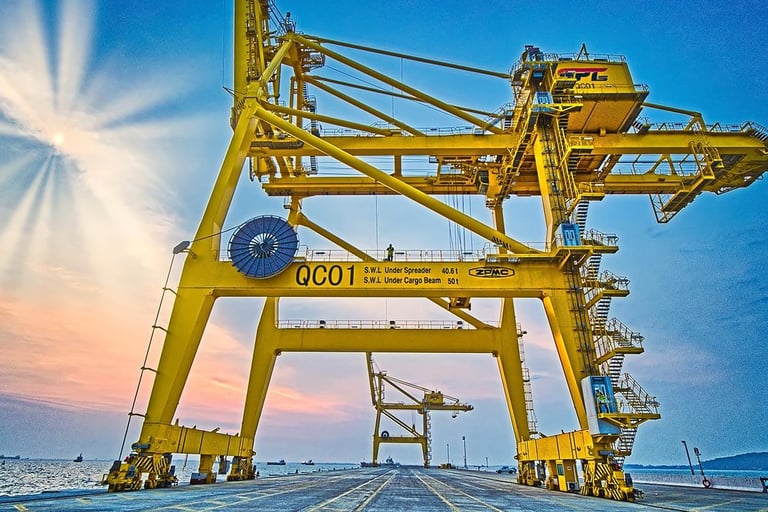

Technical Advantages
The technical specifications of the (N)SHTOEU-J cable reveal the depth of engineering that goes into its construction. The cable operates reliably across an impressive temperature range, handling reeling applications from -30°C to +80°C and fixed installations from -40°C to +80°C. This broad operational envelope ensures consistent performance whether operating in the freezing conditions of northern European ports in winter or the scorching heat of Middle Eastern terminals in summer.
Torsional resistance represents a critical parameter for reeling cables, and the (N)SHTOEU-J delivers exceptional performance with a rating of ±25°/m. This specification means the cable can withstand significant twisting forces without compromising its electrical or mechanical integrity. Such resistance is essential for equipment that may rotate or change direction frequently during operation, ensuring the cable maintains its performance characteristics throughout millions of operational cycles.
The cable's ability to handle reeling speeds up to 180 metres per minute demonstrates its suitability for high-performance applications. This capability ensures that even the fastest-operating port equipment can rely on consistent power delivery without concerns about cable performance limitations affecting operational efficiency.
At the heart of the cable's durability lies the heavy-duty 5GM5 rubber compound used for both inner and outer sheaths. This specialised rubber compound, manufactured according to DIN VDE 0207-21 standards, provides exceptional resistance to abrasion, chemicals, and environmental factors whilst maintaining flexibility across the cable's operational temperature range. The integrated braid reinforcement between the inner and outer sheaths adds another layer of mechanical protection, distributing stress loads and preventing damage that could compromise cable integrity.
Compliance with modern safety and environmental standards sets the (N)SHTOEU-J apart from older cable designs. RoHS compliance ensures the cable meets strict requirements for hazardous substance restrictions, whilst CPR rating according to 305/2011 standards addresses fire safety requirements. The cable's compliance with EN 60332-1-2 fire standards provides additional assurance for applications where fire safety is paramount.
Electrical and Mechanical Performance
The electrical characteristics of the (N)SHTOEU-J cable reflect its design for demanding power transmission applications. With a rated voltage of 0.6/1kV, the cable handles the voltage requirements of most port equipment whilst providing adequate safety margins. The maximum permissible operating voltages of 0.7/1.2kV for AC systems and 0.9/1.8kV for DC systems offer flexibility for various electrical configurations whilst maintaining safe operational parameters.
The cable's AC test voltage rating of 3.5kV demonstrates its electrical integrity and ability to withstand voltage transients and surges common in industrial environments. This high test voltage provides confidence that the cable will maintain its insulation properties even under challenging electrical conditions.
Mechanical performance specifications reveal the cable's exceptional strength characteristics. The static and dynamic tensile load ratings of 15 and 30 N/mm² respectively indicate the cable's ability to support its own weight and handle additional mechanical loads during operation. These ratings are particularly important for applications where cables may experience significant tension during reeling operations or when supporting auxiliary equipment.
The conductor design utilises Class 5 fine-stranded copper construction according to IEC 60228 standards, providing optimal flexibility whilst maintaining excellent electrical conductivity. The HEPR (Hard Ethylene Propylene Rubber) insulation compound offers superior electrical properties and maintains its characteristics across the cable's operational temperature range. This combination ensures reliable power transmission whilst providing the flexibility necessary for repeated bending and flexing cycles.
Ground conductor design mirrors the main conductors with Class 5 fine-stranded copper construction and HEPR insulation, identified with standard green-yellow colouring according to DIN VDE 0293-308. This ensures proper grounding for safety whilst maintaining the mechanical properties necessary for reeling applications.
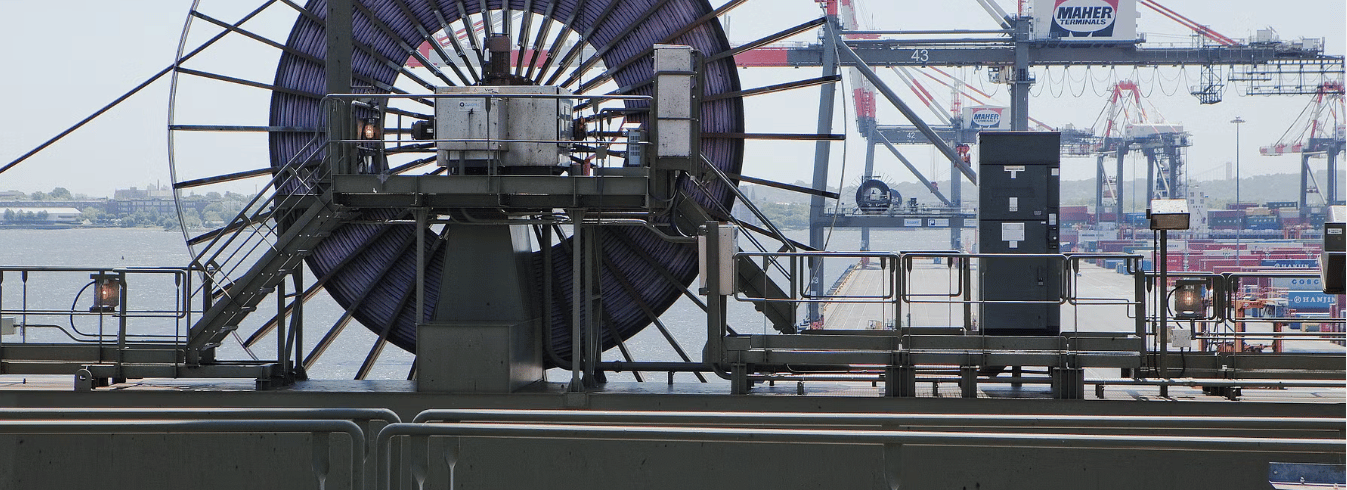

Application Scenarios
Port operations represent the primary application domain for the (N)SHTOEU-J cable, where its unique combination of electrical and mechanical properties provides essential reliability. Container cranes, those towering giants that define port skylines, rely on reeling cables to provide power and control signals as they traverse their rails and lift containers with precision. The cable's ability to handle both power transmission and control signal integrity makes it invaluable for these complex machines where communication between operator and machinery must remain flawless.
Mobile reeling systems throughout ports benefit from the cable's versatility and durability. From reach stackers that manoeuvre containers in tight spaces to rubber-tyred gantry cranes that service container storage areas, the cable provides reliable power whilst accommodating the diverse movement patterns these machines require. The cable's resistance to the abrasive port environment, including salt spray and chemical exposure from cargo handling, ensures long service life and reduced maintenance requirements.
Stockyard operations present another demanding application where the (N)SHTOEU-J excels. Bulk material handling equipment, including the massive stackers and reclaimers that move coal, iron ore, and other commodities, requires cables that can withstand not just mechanical stress but also exposure to abrasive dust and varying weather conditions. The cable's robust construction and environmental resistance make it ideal for these applications where failure can result in significant operational disruptions.
Indoor and outdoor environments with high motion demands benefit from the cable's engineered flexibility and durability. Manufacturing facilities with overhead cranes, automated guided vehicle systems, and other mobile equipment find the cable's performance characteristics essential for maintaining operational efficiency. The cable's ability to perform reliably across temperature extremes makes it suitable for applications ranging from cold storage facilities to high-temperature industrial processes.
Customisation Options
The (N)SHTOEU-J cable family offers extensive configuration options to meet diverse application requirements. Standard configurations range from 3x16+3x16/3 for lighter-duty applications to 3x300+3x150/3 for the most demanding high-power installations. This range ensures that operators can select the optimal cable size for their specific power requirements whilst maintaining the mechanical properties necessary for reliable operation.
Custom sheath configurations provide additional flexibility for specialised applications. Alternative sheath materials can be specified for applications with unique chemical resistance requirements or specific environmental challenges. These customisation options ensure that the cable can meet the exact requirements of challenging applications whilst maintaining the fundamental performance characteristics that define the (N)SHTOEU-J series.
Cradle separator options, available upon request, provide additional protection for multi-core configurations where individual core identification and protection are critical. This feature proves particularly valuable in control applications where signal integrity must be maintained alongside power transmission, ensuring that modern automated port equipment can rely on both power and communication through a single cable installation.
The manufacturer's commitment to customisation extends beyond standard options, with the ability to produce alternative cross-sections and core configurations based on specific customer requirements. This flexibility ensures that unique applications can benefit from the proven performance characteristics of the (N)SHTOEU-J design philosophy whilst meeting exact specification requirements.

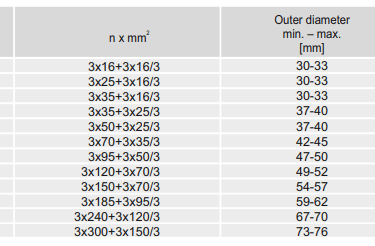
Conclusion
The (N)SHTOEU-J heavy-duty rubber reeling cable represents more than just a power transmission solution—it embodies the engineering excellence required to support the complex, demanding operations that keep global commerce moving through the world's ports. Its combination of mechanical durability, electrical reliability, and environmental resistance makes it the trusted choice for operators who cannot afford downtime or compromise on safety.
For demanding crane operations, where precision, reliability, and safety converge, the (N)SHTOEU-J provides the peace of mind that comes from proven performance in the world's most challenging environments. Its comprehensive specification coverage, from temperature extremes to mechanical stress resistance, ensures that port operators can focus on their core business of moving cargo efficiently rather than worrying about cable failures.
Feichun®'s commitment to durability and safety in port cable solutions reflects a deep understanding of the critical role that reliable power transmission plays in modern port operations. The (N)SHTOEU-J cable stands as testament to this commitment, providing operators worldwide with a solution that delivers consistent performance, operational reliability, and the peace of mind that comes from choosing a cable engineered to excel in the most demanding applications.
Frequently Asked Questions
Q: What makes the (N)SHTOEU-J cable suitable for torsional stress applications? A: The cable features integrated braid reinforcement between inner and outer sheaths, combined with a torsional resistance rating of ±25°/m. This construction allows it to withstand significant twisting forces without compromising electrical or mechanical integrity.
Q: Can this cable operate in both indoor and outdoor environments? A: Yes, the (N)SHTOEU-J is designed for unrestricted use in both indoor and outdoor environments. It features comprehensive weather resistance including UV, ozone, and moisture protection, making it ideal for exposed port applications.
Q: What is the maximum reeling speed for this cable? A: The cable can handle reeling speeds up to 180 metres per minute, making it suitable for high-performance port equipment and automated systems that require rapid cable deployment and retraction.
Q: How does the cable handle temperature extremes in different climates? A: The cable operates reliably from -30°C to +80°C in reeling applications and -40°C to +80°C in fixed installations, ensuring consistent performance across diverse global port environments.
Q: What voltage ratings are available for the (N)SHTOEU-J cable? A: The cable has a rated voltage of 0.6/1kV with maximum permissible operating voltages of 0.7/1.2kV for AC systems and 0.9/1.8kV for DC systems, suitable for most port equipment power requirements.
Q: Are custom configurations available beyond the standard range? A: Yes, custom cross-sections, core configurations, and sheath options are available upon request. The manufacturer can accommodate specific requirements whilst maintaining the proven performance characteristics of the (N)SHTOEU-J design.
How to Reach Us
Get in Touch
SiteMap
Product Catalogue
Reeling Cable
Festoon Cable
Shore Power Cable




Scan to add us on WeChat
